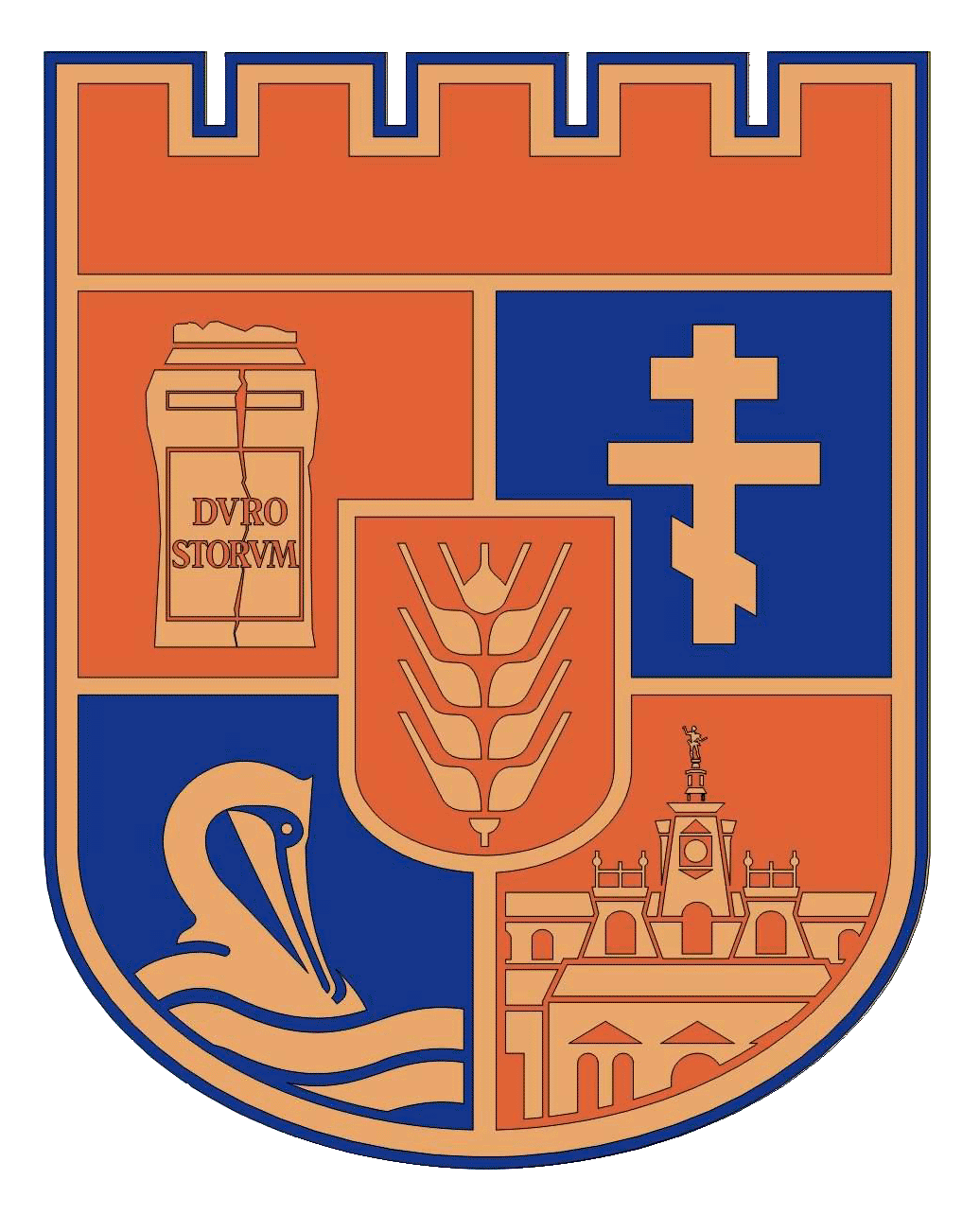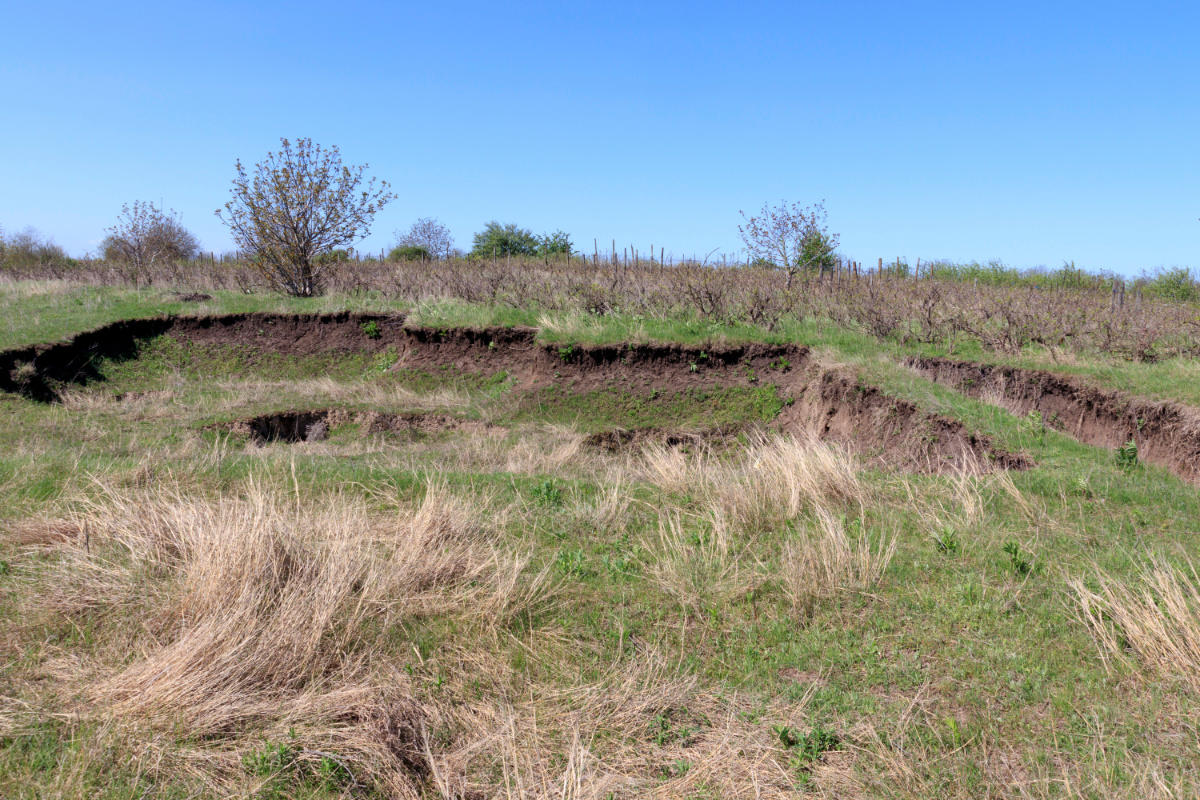The archaeological site Gumelniţa, Olteniţa
Category OtherDESCRIPTION
Măgura Gumelniţa is a naturally eroded piece of land, broken from the high terrace of the Danube, located 3.5 km east of Oltenita, Calarasi County. The surface of the archaeological site is 3 ha.
The special organization of the Magura Gumelnita habitat points out that this was done according to a plan, with the houses placed in circular rows, and the central space featuring an imposing, probably several floors high construction that served as a meeting place of community members and as a sanctuary for magical and religious ceremonies.
All of this is evidence that the Gumelnita society was hierarchical and that there was a dominant social class of people that imposed its rule on the surrounding communities. The architectural organization documented on Magura Gumelnita is a form of proto urban organization.[1]
HISTORY
A true systematic research began in 1920 when some young archeologists, some of them students led by the archaelogist Vasile Parvan, carried out surface surveys on the banks of Lake Ezerul Mostistea, in the Danube meadow from Cascioarele to Calarasi and on the banks of the Arges rivers and Dambovita to Vasilati. On this occasion, in the summer of 1924, Vladimir Dumitrescu, then a student, gathered archaeological materials at the foot of Gumelniţa. He realized thanks to the burnt scabbard and the many ceramic fragments there, that this is a prehistoric settlement.
In December 1924, Ion David, a substitute professor of Latin at the Oltenita High School, announced to the National Antiquities Museum that a beautiful archaeological collection was gathered in Oltenita by Barbu Ionescu (the founder of the Oltenita Museum). Barbu Ionescu had learned from the inhabitants of Oltenita that on their lands, on the "mound" Gumelnita, they found innumerable pieces of pots from "giants". In order to make a collection, B. Ionescu had made a number of pits in the slope of the archaeological site, from which he revealed some dozens of pots, a golden square and various other prehistoric objects. At the insistence of the delegate of the mentioned museum, he donated his collection, which was loaded into two large boxes and taken to Bucharest. The scholar Vasile Parvan was very pleased with this donation and he thanked the donator with an official address. The collection donated by Barbu Ionescu was the subject of the first scientific article signed by the researcher Vladimir Dumitrescu and published by Vasile Parvan in the Dacia archaeological magazine. In the summer of 1925, Vladimir Dumitrescu, helped by his younger colleague, Ion Nestor, carried out the first scientific archaeological excavations on Magura Gumelnita. Thus the illustrious scholar linked his name to Gumelniţa and the Gumelniţa civilization. The Gumelniţa Magura was then the property of a man by the surname of Calomfirescu. He did not allow archaeologists to dig even in the wide access roads. Excavations were carried out only in a small area, at the highest point of the settlement, on the land of an Oltenita inhabitant who did not cultivate it because of the 30 to 40 cm “deep bricks" (actually they were pieces of burned clay, debris from the walls of burned prehistoric dwellings). In addition to the numerous vestiges of clay, stone or bone, a gold pendant was also brought to light. During the excavations the Gumelnita site was once more visited by Vasile Pârvan, a member of the Romanian Academy, a professor at the Faculty of History of the University of Bucharest and the director of the National Museum of Antiquities. That is when the first stratigraphic excavation in a prehistoric settlement was done in Romania.
Between 1938 and 1940 the diggings on Măgura Gumelniţa are resumed by Dinu V. Rosetti, director of the Bucharest Museum. Calomfirescu, the owner of the Magura, allowed Rosetii, a family friend, to dig where he wanted because he was the nephew of the famous politician Constantin Alexandru.Rosetti. However, the results of those diggings remained undocumented, except a mention of several gold objects, which were lost during the Second World War, during the refuge of Craiova's patrimony of the Bucharest City Museum, facing the upcoming occupation of the capital by Soviet troops.
In 1960, the researcher Vladimir Dumitrescu conducted a new survey on Magura Gumelnita, finding that the stratigraphical observations that he made 35 years ago are correct . On that occasion was discovered the Perechea de îndrăgostiţi, a unique sculptural group made of clay and an anthropomorphic gold idol weighing one gram.[2]
SITE SIGNIFICANCE
The archaeological site is a testimony to the culture of Gumelnitsa.
OTHER INFORMATION
The Gumelnita society was hierarchical.
CLASSIFICATION
Archeological site
[1] Măgura Gumelniţa
https://muzeulgumelnita.ro/santiere-arheologice/magura-gumelnita
[2] Aşezarea Gumelniţa de la Olteniţa - Măgura Gumelniţa




